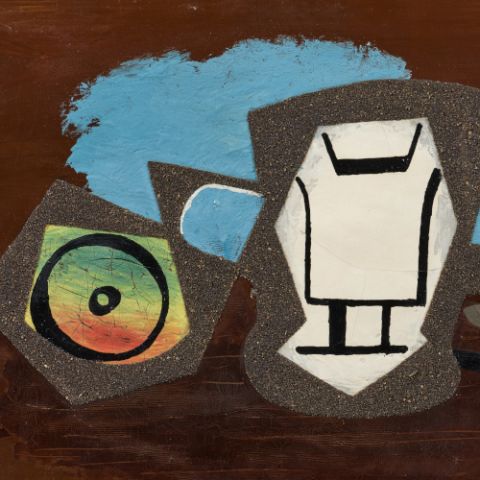
Lot 23 | Marc Chagall | Le Cirque
1887 Vitebsk - 1985 St. Paul de Vence
Title: Le Cirque.
Subtitle: Complete volume.
Date: 1967.
Technique: 23 colour lithographs, 3 of them double-sided and 15 lithographs each on double pages,
folded in the centre, with text imprint. Each on ARCHES (watermark).
Depiction Size: 42,3 x 32,5 and 42,3 x 65cm.
Notation: Signed and numbered in the imprint.
Publisher: Tériade, Paris (ed.).
Number: Ex. 74/250.
Case: In original cloth-covered binding and slipcase.
Provenance:
- Private collection Baden-Württemberg
Literature:
- Cain, Julien (ed.): Chagall - Lithograph III, 1962-1968, Monte Carlo 1969, cat. rais. no. 490 - 527
- Cramer, Patrick: Marc Chagall, The Illustrated Books: Catalogue Raisonné, Geneva 1995, cat. rais.. no. 68
- A major graphic work by the artist that is rarely offered in its entirety on the art market
- The intense colours, the dynamic line and the harmony between text and image make the suite an exceptional work
- For Chagall, the circus was the ideal setting for his dreamlike depictions between reality and fantasy
Marc Chagall and the circus
Reminiscent of the travelling circuses that Chagall encountered in his youth in Vitebsk, Russia, the circus theme appeared in his work as early as the 1910s and over time became a centrepiece of his art. He was inspired by the vibrant colours, dynamic movements and unique blend of reality and fantasy. For Chagall, the circus embodied a world full of emotions and dreams, where the everyday is transformed into something extraordinary.
In his motifs, he captures the spectacle in all its colourful diversity, which at first glance appears joyful and colourful: acrobats, jugglers, musicians, trapeze artists, trick riders and stands full of onlookers. But behind this enchanting world lies a metaphorical and symbolic dimension of tragedy, where laughter mingles with drama.
Like Pablo Picasso, Chagall associates the world of circus performers with the tragedy of existence: ‘For me, the circus is the most tragic of performances. (.) I have always regarded clowns, acrobats and actors as beings of tragic humanity.’ (Marc Chagall, The Circus, in: Gauss, Ulrike (ed.), Chagall – The Lithographs, Stuttgart 1998, p. 216) The artists are making an effort, beaming and dreaming, but at the same time they are vulnerable in the ring, exposed to the gaze and judgement of the audience. This mixture of spectacle and inner drama gives Chagall's circus motifs an emotional depth that goes beyond the mere depiction of entertainment.
"Le Cirque" from 1967
Ambroise Vollard, who was Chagall's dealer and publisher of prints in the 1920s and 1930s, was also a lover of the circus. In 1927, he asked Chagall to create a series of gouaches on this theme. Chagall was allowed to use Vollard's personal box at the Cirque d'Hiver in Paris for the works. After its completion, the project became known as the series ‘Cirque Vollard’.
In 1962, Chagall began work on the series ‘Le Cirque’ based on these early gouaches. The 23 colour lithographs and 15 black and white lithographs that emerged from this work are now considered to be some of Chagall's most impressive graphic series. The accompanying texts were also written by Chagall, creating an artist's book in which text and image complement each other beautifully.
The artist had always been fascinated by colour lithography as a printmaking medium because it offers almost unlimited painterly freedom. He worked directly on the lithographic stone, and the resulting prints convey the spontaneity of his brushstrokes and drawn lines. The dual nature of enchanted world and tragedy, which Chagall felt at the circus, is clearly evident in every realisation. The images are surrounded by a dreamy atmosphere and mysterious aura.
Modern, Post War & Contemporary Art
+49 221 92 58 62 300
Print this lot | Recommend lot |
Conditions of this Lot
32% buyer’s premium on the hammer price
Estimated shipping costs for this lot:
Arrangement after the auction.
Marc Chagall Surrealism Modern Art Prints 1960s Circus Print Colour lithograph































